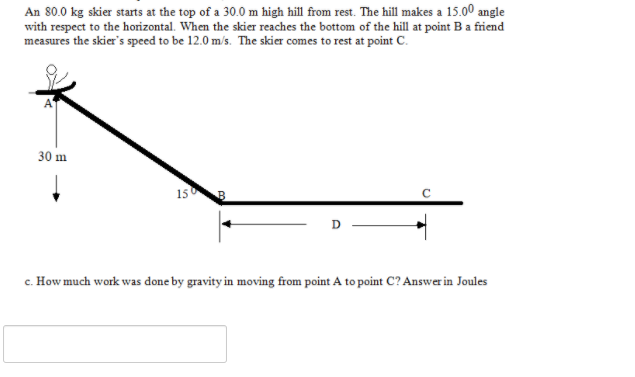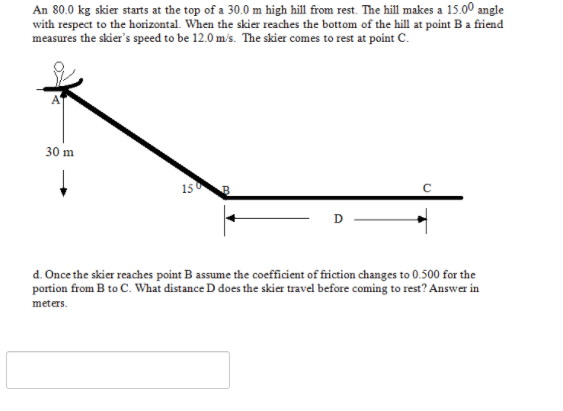An 80.0 kg skier starts at the top of a 30.0 m high hill from rest. The hill makes a 15.00 angle with respect to the horizontal. When the skier reaches the bottom of the hill at point B a friend measures the skier's speed to be 12.0 m's. The skier comes to rest at point C. 30 m 15 . How much work was done by gravity in moving from point A to point C? Answer in Joules
Displacement, Velocity and Acceleration
In classical mechanics, kinematics deals with the motion of a particle. It deals only with the position, velocity, acceleration, and displacement of a particle. It has no concern about the source of motion.
Linear Displacement
The term "displacement" refers to when something shifts away from its original "location," and "linear" refers to a straight line. As a result, “Linear Displacement” can be described as the movement of an object in a straight line along a single axis, for example, from side to side or up and down. Non-contact sensors such as LVDTs and other linear location sensors can calculate linear displacement. Non-contact sensors such as LVDTs and other linear location sensors can calculate linear displacement. Linear displacement is usually measured in millimeters or inches and may be positive or negative.
Please use at least 4 significant figures throughout the entire problem! Also use 9.80m/s2 for the acceleration due to gravity. DO NOT USE 10 M/S2 FOR THE ACCELERATION DUE TO GRAVITY!
Thank You.


Trending now
This is a popular solution!
Step by step
Solved in 4 steps with 4 images









